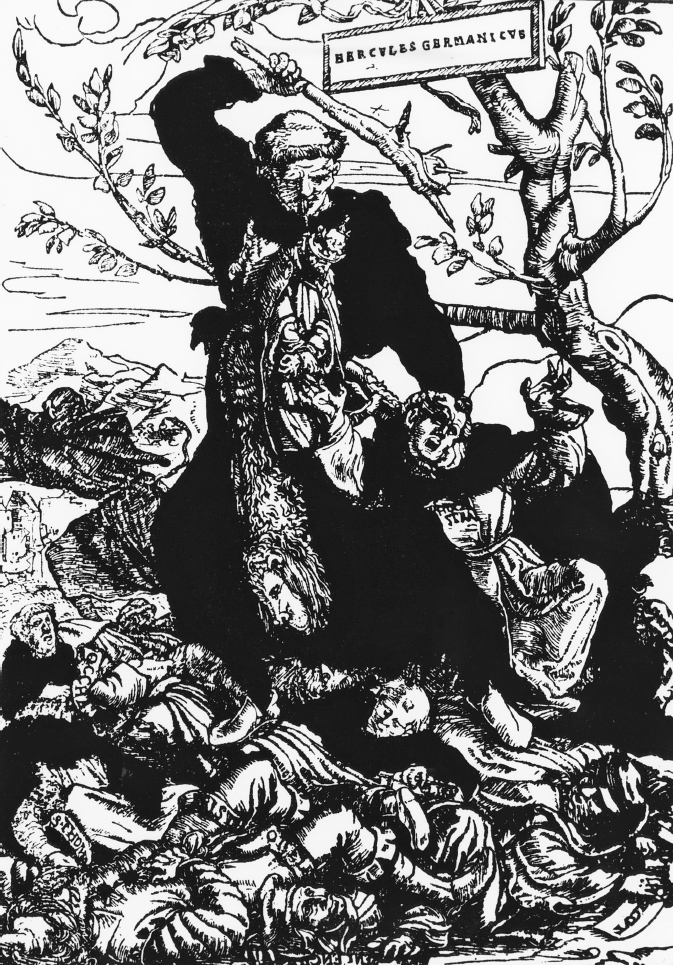Sources for Western Society: Printed Page 197
| 13-2 | | Reformation Propaganda |
| HANS HOLBEIN THE YOUNGER, Luther as the German Hercules (ca. 1519) |
One of Martin Luther’s greatest assets was the printing press. Print technology facilitated the rapid dissemination of Lutheran ideas to a wide variety of audiences. The propaganda campaign waged by Luther’s supporters included inexpensive print versions of his tracts, pamphlets, and treatises. It also included images aimed at the illiterate and semi-literate. A majority of sixteenth-century Europeans could not read, and woodcuts like this one, created by Hans Holbein the Younger (1498–1543), served as vehicles for their inclusion in the religious debates that dominated much of the century. Here, Luther is depicted as the Greek hero Hercules, who killed the hydra, a beast with nine heads. The artist has replaced the hydra with nine churchmen, including the theologian Thomas Aquinas (see Document 10-6), monks, and priests. The strangled pope, identifiable by his triple crown, dangles from the rope in Luther’s mouth.

akg–images.
READING QUESTIONS
Question
How would you describe the way Luther is depicted here? What about the church leaders?
Question
How would you sum up the intended message of this image in a single sentence? What group or groups might it have been meant to influence?
Question
What light does this image shed on the nature of religious conflict during the Reformation? What room, if any, did such images leave for compromise between Protestants and Catholics?